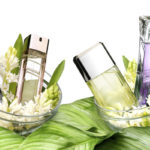The First Standard
When it comes to choosing wet wipes, the first thing users should look for is clear and precise printing on the packaging. This includes information about the manufacturer, production date, and expiration date. It is important that this data is easy to read and understand.
In addition, the list of ingredients should be comprehensive and include the exact chemical names of the substances used. This is crucial because it allows consumers to make informed decisions about the products they are using and to be aware of any potential allergies or sensitivities they may have.
Once the full list of ingredients is provided on the packaging, the manufacturer takes responsibility for disclosing the concentrations of the substances used in the “base standard” of the product. This information is then managed and checked by state agencies.
Be wary of wet wipes that list their “ingredients” vaguely, such as “water, preservatives, and fragrances.” It is important to know exactly what chemicals are included in the product to make an informed purchase decision.
Some reputable wet wipe manufacturers have earned certifications and recognition from international organizations and state agencies for their safe and high-quality products. Look for these certifications as a sign of a reliable and trustworthy brand: , , , ,…
 Clear ingredient listing on packaging
Clear ingredient listing on packaging
Notes on the “Ingredients” Formula on the Packaging
Water
Water is the primary ingredient in wet wipes, typically making up more than 90% of the formula. This means that the higher the water content, the fewer “additives” are present in the product.

Preservatives
Preservatives are almost always necessary to ensure the safety of the product from the time it leaves the factory until it reaches the consumer. However, it is important to consider the type of preservative used and its concentration, as this can have a direct impact on the user’s health.
Among the permitted preservatives, there are differing opinions about the health effects of Phenoxyl Ethanol and Parabens. Both are effective in killing bacteria and yeast, preventing their growth and destruction of the product within its specified shelf life.

According to the US Food and Drug Administration (FDA) and the French National Agency for the Safety of Medicines and Health Products (ANSM), these two preservatives have established safe concentration limits. Specifically:
– Phenoxyl Ethanol is considered effective and harmless when used in concentrations of less than 1%.
– Parabens, which are often combined in multiple forms such as methylparaben, ethylparaben, propylparaben, and butylparaben, are deemed safe when used in concentrations between 0.01% and 0.3%.
While there are currently no safety warnings specifically about wet wipes containing Phenoxyl Ethanol and Parabens at these safe concentrations, it is always advisable to exercise caution. Consumers should be vigilant when it comes to products containing these preservatives and are encouraged to opt for reputable brands that provide clear manufacturing and ingredient information on their packaging.
Fragrance
Fragrance is a general term for the chemical compounds used to create a particular scent in wet wipes. These chemicals can sometimes be a source of allergies and other health concerns.
To ensure the safety of wet wipes, it is recommended to choose products with fragrances derived from natural sources such as aloe vera, rose, or herbal extracts. These natural fragrances typically result in a subtle and gentle scent that doesn’t linger too long on the skin.

For those who are particularly cautious, look for products with a “fragrance-free” label on the packaging, and consider opting for unscented wet wipes whenever possible.
While the use of wet wipes is being discouraged due to environmental concerns, their convenience in daily life cannot be denied. So, if you need to choose or use them, make sure to do so wisely!
For more information, visit:
Reference: suckhoe.vnexpress.net
“How to Keep Fresh Flowers Arranged for Up to 3 Days Without Overwatering”
It’s almost that time of year again – Tết! As you adorn your home with gorgeous and vibrant flowers, you may be wondering: how do I make sure they stay fresh for as long as possible? If you’re not familiar with the right care techniques, your flowers can fade and start to wilt in as little as one or two days. Don’t worry though, we have some tips here to help keep your flowers looking beautiful for the duration of the festive season!






































